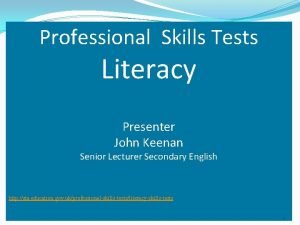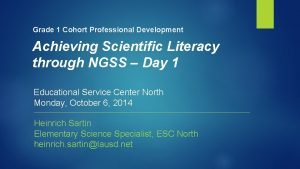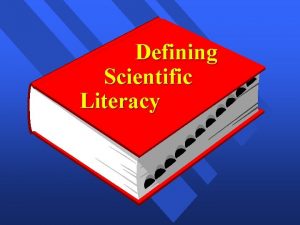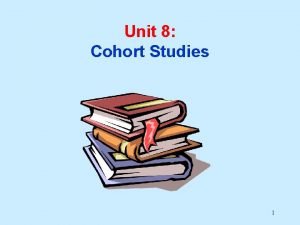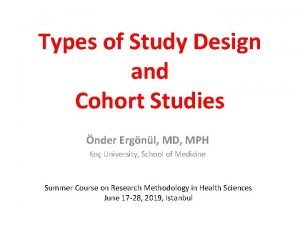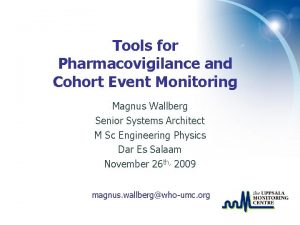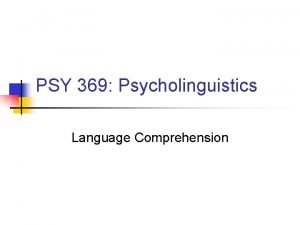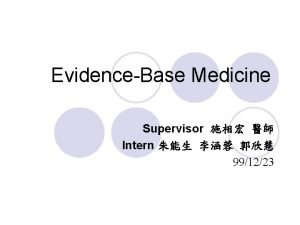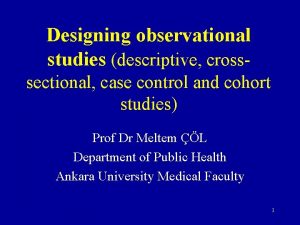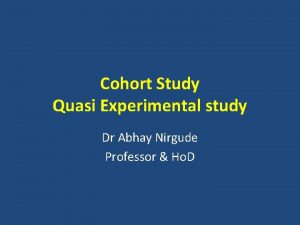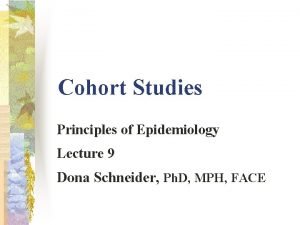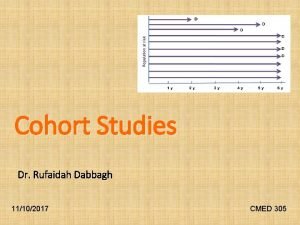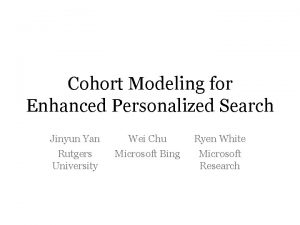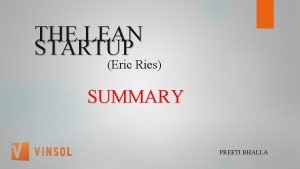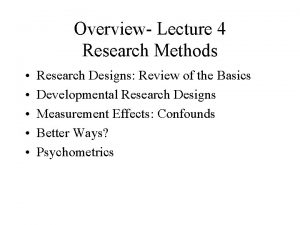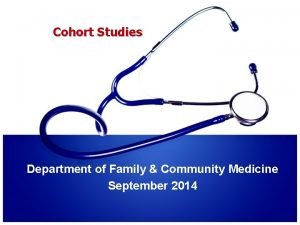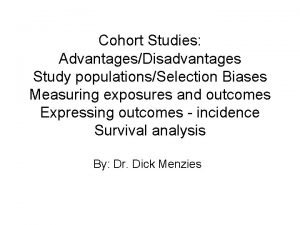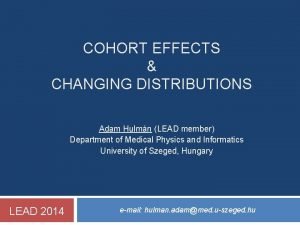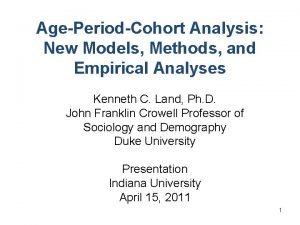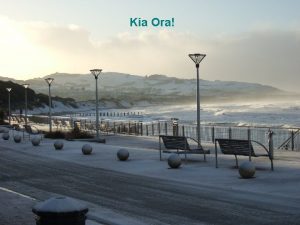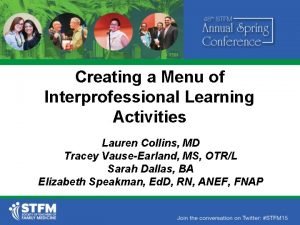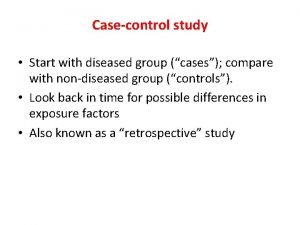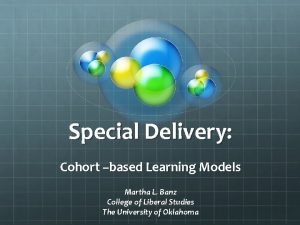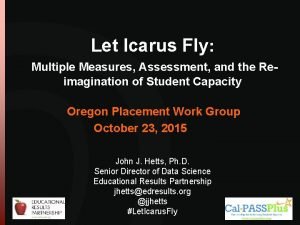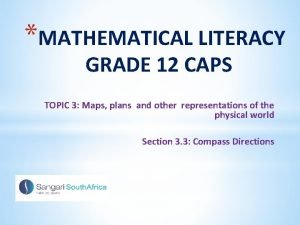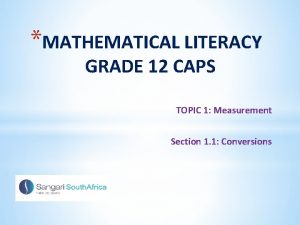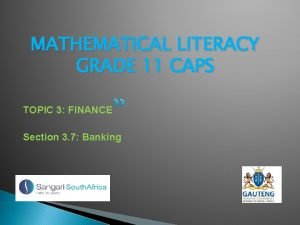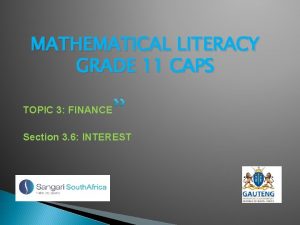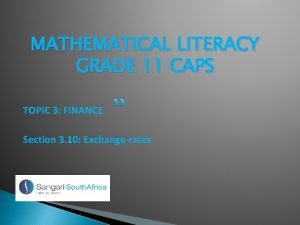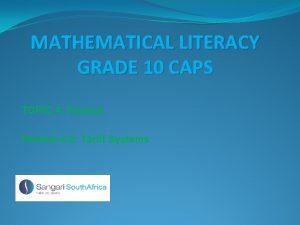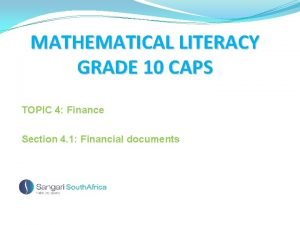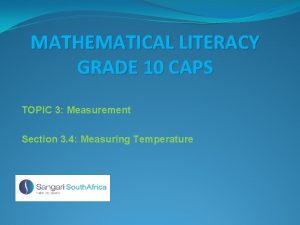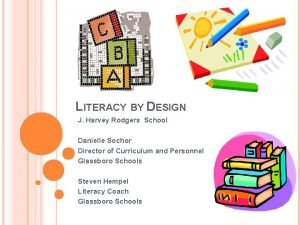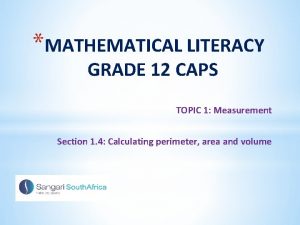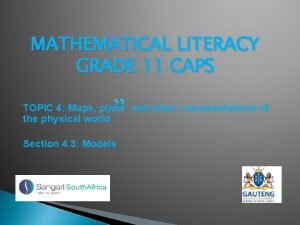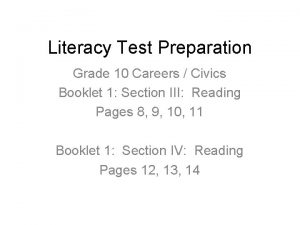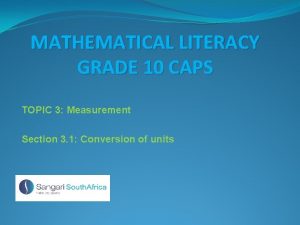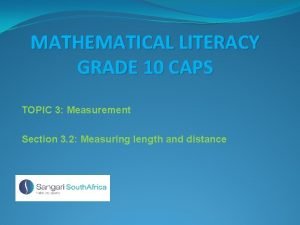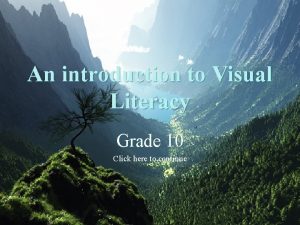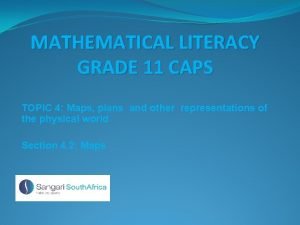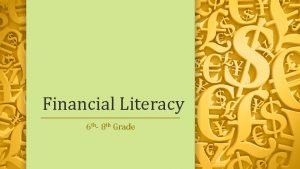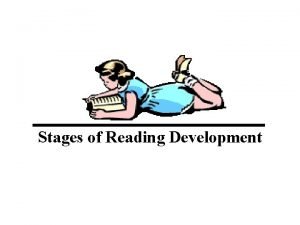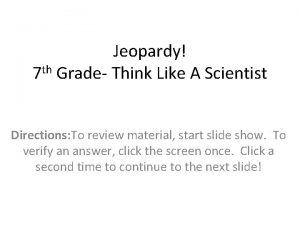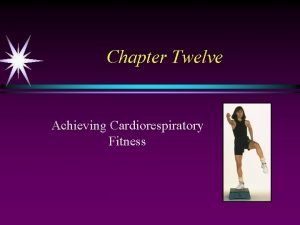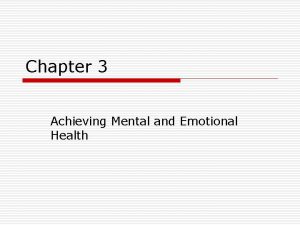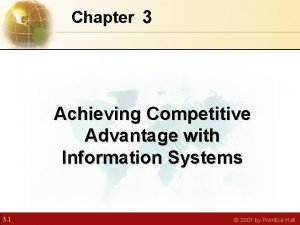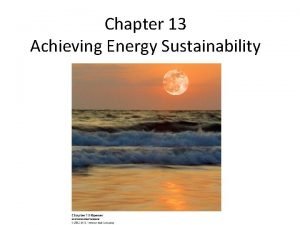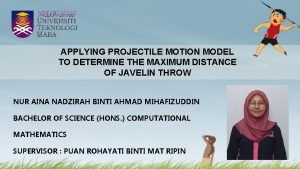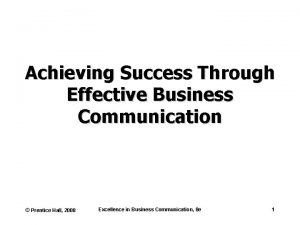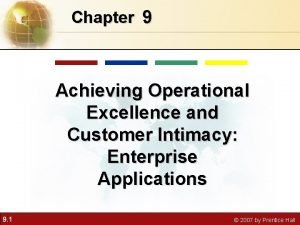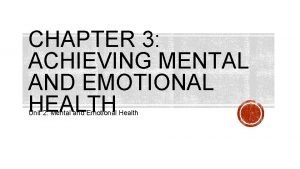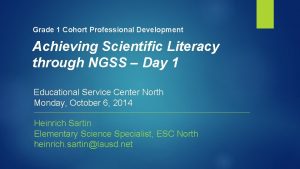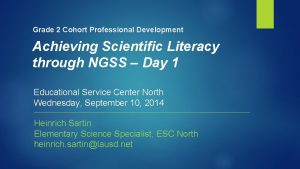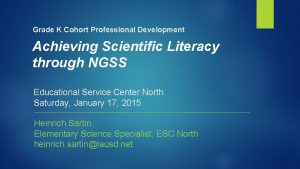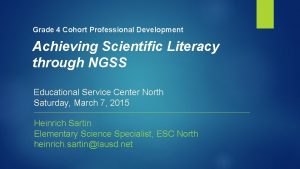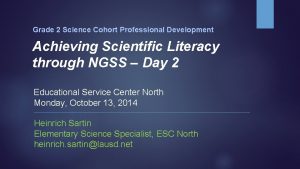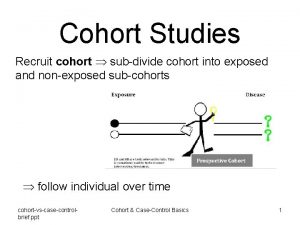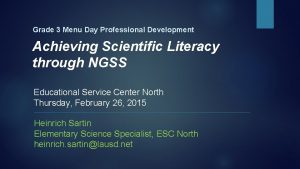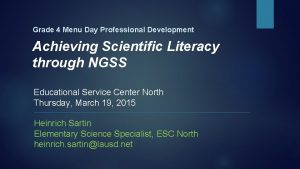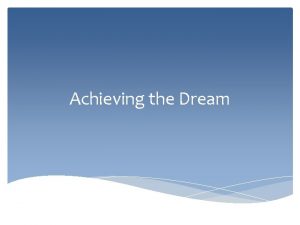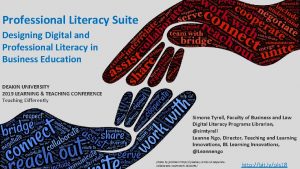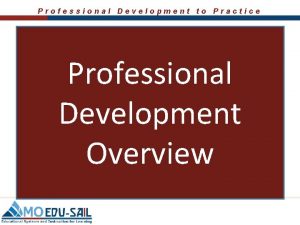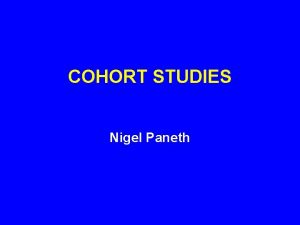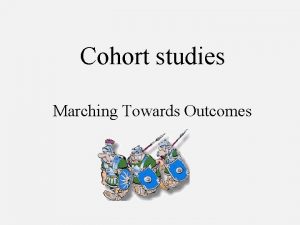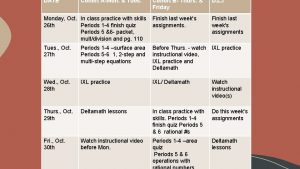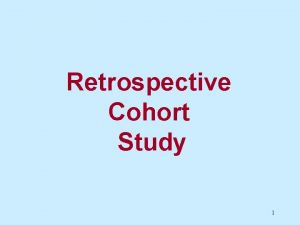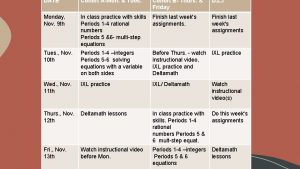Grade 1 Cohort Professional Development Achieving Scientific Literacy













































































- Slides: 77

Grade 1 Cohort Professional Development Achieving Scientific Literacy through NGSS – Day 1 Educational Service Center North Monday, October 6, 2014 Heinrich Sartin Elementary Science Specialist, ESC North heinrich. sartin@lausd. net

1 + 1 Day Science Cohort PD Model One-day PD & Planning 2 • Selected grade 1 teachers attend NGSS professional development and begin to plan an NGSS lesson on Monday, October 6. Support & Implementation One-day Follow-up • Teachers receive lesson-planning support and implement lesson during October-November. • Teachers share experiences from lessons, student work, and plan next steps on Monday, November 17

Common Core 2013 -14 Goals Plan Strategic Planning Cycle Revise Deliver Reflect

Common Core 2013 -14 Goals • Close Reading • Text-Dependent Questions • Complex Text

Common Core 2013 -14 Goals Technology Integration

Learning Objectives 6 After completing today’s training, teachers will be able to: • Plan rigorous science lessons that align with the three dimensions of the Next Generation Science Standards (NGSS) • Make connections with students between NGSS and CCSS • Use Depth of Knowledge (DOK) and Understanding by Design (Ub. D) to plan lessons that meet the needs of diverse learners • Use Google Docs for interactive lesson planning

7 Agenda Intro to the Next Generation Science Standards NGSS Physical Science Lesson Debrief with NGSS, CCSS, and Diverse Learner Lenses Planning Lessons Using DOK and Ub. D The 5 E Lesson Plan Format Teacher Lesson Planning Time

Professional Learning Community Norms Be present Start and end on time Silence cell phones Value each other’s input Listen to understand Focus on what the data tells us 8 Ask the hard questions Think outside of the box What is learned here leaves here Be open to sharing and collaborating

9 Agenda Intro to the Next Generation Science Standards NGSS Physical Science Lesson Debrief with NGSS, CCSS, and Diverse Learner Lenses Planning Lessons Using DOK and Ub. D The 5 E Lesson Plan Format Teacher Lesson Planning Time

Life Science Lesson – First Impressions 10 • Take a few minutes to examine the provided “Make an Ant” lesson. • Discuss the lesson with your table team and chart a list of things that you would recommend adding to the lesson to improve it. • Table teams will share their recommendations with whole group. • We will revisit this lesson and your recommendations later through the lens of the NGSS EQu. IP rubric.

Timeline for NGSS Implementation 2014 -15 2015 -16 2016 -17 11 2017 -18 • 2014 -2016 – NGSS awareness training for teachers. Teachers will continue to use the current California science standards, but are encouraged to implement the NGSS scientific and engineering practices and try a few NGSS lessons. • 2016 -2017 - Formal instructional shifts will begin to prepare for full implementation. • 2017 -2018 – First year of full implementation with anticipated adoption of new instructional materials.

Why New Standards? 12 The U. S. ranks 27 th out of 29 developed nations in the proportion of college students receiving undergraduate degrees in science and engineering. SOURCE: NATIONAL RESEARCH COUNCIL

Why New Standards? 13 Nearly 90 percent of high school graduates say they’re not interested in a career or a college major involving science, technology, engineering or math, known collectively as STEM, according to a survey of more than a million students who take the ACT test. SOURCE: NEW YORK TIMES

Comparing CA Standards with NGSS Performance Expectations Current CA Science Standards Know Do • Students know objects fall to the ground unless something holds them up. • Students will write or draw descriptions of a sequence of steps, events, and observations. 14 NGSS Performance Expectations Know & Do Analyze data obtained from testing different materials to determine which materials have the properties that are best suited for an intended purpose.

Dimension 2 Dimension 1 Disciplinary Core Ideas Scientific and Engineering Practices 15 Dimension 3 Crosscuttin g Concepts Performance Expectations

Grade 1 Physical Science Performance Expectation Scientific & Engineering Practice Disciplinary Core Idea Crosscutting Concept Connections to CCSS 16

Select the Correct Dimension 17 Task: • Work in teams of two • Use the template to sort the statements in your envelope into the following three categories: Dimension 1 Dimension 2 Dimension 3 Scientific and Engineering Practices Disciplinary Core Ideas Crosscuttin g Concepts • Use the following list of definitions to help guide your work

NGSS - Three Dimensions Dimension 1 - Scientific and Engineering Practices The practices describe behaviors that scientists engage in as they investigate and build models and theories about the natural world and the key set of engineering practices that engineers use as they design and build models and systems. 18

NGSS - Three Dimensions Dimension 2 – Disciplinary Core Ideas 19 (Should meet at least two of the following four criteria. ) • Have broad importance across multiple sciences or engineering disciplines; • Provide a key tool for understanding or investigating more complex ideas and solving problems; • Relate to the interests and life experiences of students or are connected to societal or personal concerns that require scientific or technological knowledge; • Are teachable and learnable over multiple grades at increasing levels of depth and sophistication.

NGSS - Three Dimensions Dimension 3 – Crosscutting Concepts 20 Crosscutting concepts provide students with connections and intellectual tools that are related across the differing areas of disciplinary content and can enrich their application of practices and their understanding of the core ideas.

NGSS - Three Dimensions Checking Your Work 21 Use the answer key to see how well you did in sorting out the Three Dimensions of NGSS.

Select the Correct Domain 22 Task: • Work in teams of two • Use the other side of the template to sort the Disciplinary Core Ideas into the domains of: • Life science • Earth science • Physical science • Engineering

NGSS - Three Dimensions Checking Your Work Use the NGSS Performance Expectations to see how well you did in sorting out the Four Domains of NGSS. 23

Think – Ink – Pair – Share How will the organization of the new NGSS impact my teaching and students’ learning in the future? 24

25 NGSS Dimension 1 - Scientific and Engineering Practices 1. Asking questions and defining problems 5. Using mathematics and computational thinking 2. Developing and using models 6. Developing explanations and designing solutions 3. Planning and carrying out investigations 4. Analyzing and interpreting data 7. Engaging in argument 8. Obtaining, evaluating, and communicating information

26 NGSS Dimension 2 – Disciplinary Core Ideas • Physical Sciences: PS 1, PS 2, PS 3, & PS 4 • Life Sciences: LS 1, LS 2, & LS 4 • Earth & Space Sciences: ESS 1, ESS 2, & ESS 2

NGSS Dimension 3 – Crosscutting Concepts 1. Patterns 2. Cause and effect 3. Scale, proportion and quantity 4. Systems and system models 5. Energy and matter 6. Structure and function 7. Stability and change 27

28 Introducing… The EQu. IP Rubric • Read silently through the three parts of the “EQu. IP Rubric for Lessons & Units: Science. ” • Discuss the rubric with your table team and create a poster that summarizes each of the three sections of the rubric. • Table teams will share their findings with the whole group.

Reading: How to Select and Design Materials that Align to the NGSS 29 Use the “Say Something” protocol to discuss the reading with a table partner, as follows: • After reading up to each of the bolded headings (Getting Started, Instructional Supports, etc. ), say something about the reading to your partner. • He/she will say something in return. • Repeat this process until you have finished the reading.

NGSS Disciplinary Core Ideas by Grade Level PS 1 PS 2 PS 3 PS 4 LS 1 LS 2 LS 3 LS 4 ESS 1 ESS 2 ESS 3 Matter and its Interactions Motion and Stability: Forces and Interactions Energy Waves and Their Applications in Technologies for Information Transfer From Molecules to Organisms: Structures and Processes Ecosystems: Interactions, Energy, and Dynamics Heredity: Inheritance and Variation of Traits Biological Evolution: Unity and Diversity Earth’s Place in the Universe Earth’s Systems Earth and Human Activity K 1 2 3 4 5 30

NGSS Disciplinary Core Ideas by Grade Level PS 1 PS 2 PS 3 PS 4 LS 1 LS 2 LS 3 LS 4 ESS 1 ESS 2 ESS 3 Matter and its Interactions Motion and Stability: Forces and Interactions Energy Waves and Their Applications in Technologies for Information Transfer From Molecules to Organisms: Structures and Processes Ecosystems: Interactions, Energy, and Dynamics Heredity: Inheritance and Variation of Traits Biological Evolution: Unity and Diversity Earth’s Place in the Universe Earth’s Systems Earth and Human Activity K 1 2 3 4 5 31

NGSS Disciplinary Core Ideas by Grade Level PS 1 PS 2 PS 3 PS 4 LS 1 LS 2 LS 3 LS 4 ESS 1 ESS 2 ESS 3 Matter and its Interactions Motion and Stability: Forces and Interactions Energy Waves and Their Applications in Technologies for Information Transfer From Molecules to Organisms: Structures and Processes Ecosystems: Interactions, Energy, and Dynamics Heredity: Inheritance and Variation of Traits Biological Evolution: Unity and Diversity Earth’s Place in the Universe Earth’s Systems Earth and Human Activity K 1 2 3 4 5 32

NGSS Disciplinary Core Ideas by Grade Level PS 1 PS 2 PS 3 PS 4 LS 1 LS 2 LS 3 LS 4 ESS 1 ESS 2 ESS 3 Matter and its Interactions Motion and Stability: Forces and Interactions Energy Waves and Their Applications in Technologies for Information Transfer From Molecules to Organisms: Structures and Processes Ecosystems: Interactions, Energy, and Dynamics Heredity: Inheritance and Variation of Traits Biological Evolution: Unity and Diversity Earth’s Place in the Universe Earth’s Systems Earth and Human Activity K 1 2 3 4 5 33

NGSS Disciplinary Core Ideas by Grade Level PS 1 PS 2 PS 3 PS 4 LS 1 LS 2 LS 3 LS 4 ESS 1 ESS 2 ESS 3 Matter and its Interactions Motion and Stability: Forces and Interactions Energy Waves and Their Applications in Technologies for Information Transfer From Molecules to Organisms: Structures and Processes Ecosystems: Interactions, Energy, and Dynamics Heredity: Inheritance and Variation of Traits Biological Evolution: Unity and Diversity Earth’s Place in the Universe Earth’s Systems Earth and Human Activity K 1 2 3 4 5 34

NGSS Disciplinary Core Ideas by Grade Level PS 1 PS 2 PS 3 PS 4 LS 1 LS 2 LS 3 LS 4 ESS 1 ESS 2 ESS 3 Matter and its Interactions Motion and Stability: Forces and Interactions Energy Waves and Their Applications in Technologies for Information Transfer From Molecules to Organisms: Structures and Processes Ecosystems: Interactions, Energy, and Dynamics Heredity: Inheritance and Variation of Traits Biological Evolution: Unity and Diversity Earth’s Place in the Universe Earth’s Systems Earth and Human Activity K 1 2 3 4 5 35

NGSS Disciplinary Core Ideas by Grade Level PS 1 PS 2 PS 3 PS 4 LS 1 LS 2 LS 3 LS 4 ESS 1 ESS 2 ESS 3 Matter and its Interactions Motion and Stability: Forces and Interactions Energy Waves and Their Applications in Technologies for Information Transfer From Molecules to Organisms: Structures and Processes Ecosystems: Interactions, Energy, and Dynamics Heredity: Inheritance and Variation of Traits Biological Evolution: Unity and Diversity Earth’s Place in the Universe Earth’s Systems Earth and Human Activity K 1 2 3 4 5 36

37 Agenda Intro to the Next Generation Science Standards NGSS Physical Science Lesson Debrief with NGSS, CCSS, and Diverse Learner Lenses Planning Lessons Using DOK and Ub. D The 5 E Lesson Plan Format Teacher Lesson Planning Time

38 Let’s take a look at a lesson from a grade 2 NGSS unit titled, “Structures and Properties of Matter. ” • • The unit has 17 lessons, which cover performance expectations PS 1 -1, PS 1 -2, PS 1 -3, and PS 1 -4 You will be engaged as learners for lesson 4

Performance Expectations Grade 2 Physical Sciences PS 1 – “Matter and Its Interactions” 39 PS 1 -1 PS 1 -2 PS 1 -3 PS 1 -4 Plan and conduct an investigation to describe and classify different kinds of materials by their observable properties. Analyze data obtained from testing different materials to determine which materials have the properties that are best suited for an intended purpose. Make observations to construct an evidencebased account of how an object made of small sets of pieces can be dissembled and made into a new object. Construct an argument with evidence that some changes caused by heating or cooling can be reversed and some cannot.

Performance Expectations Grade 2 Physical Sciences PS 1 – “Matter and Its Interactions” 40 PS 1 -1 PS 1 -2 PS 1 -3 PS 1 -4 Plan and conduct an investigation to describe and classify different kinds of materials by their observable properties. Analyze data obtained from testing different materials to determine which materials have the properties that are best suited for an intended purpose. Make observations to construct an evidencebased account of how an object made of small sets of pieces can be dissembled and made into a new object. Construct an argument with evidence that some changes caused by heating or cooling can be reversed and some cannot. Lessons 4, 5, 6, 7 8, 9 Lessons 1, 2, 3 Lessons 10, 11, 12, 13, 14, 15, 16, 17

Performance Expectations Grade 2 Physical Sciences PS 1 – “Matter and Its Interactions” 41 PS 1 -2 PS 1 -3 PS 1 -4 Plan and conduct an investigation to describe and classify different kinds of materials by their observable properties. Analyze data obtained from testing different materials to determine which materials have the properties that are best suited for an intended purpose. Make observations to construct an evidencebased account of how an object made of small sets of pieces can be dissembled and made into a new object. Construct an argument with evidence that some changes caused by heating or cooling can be reversed and some cannot.

Grade 2 Physical Science Performance Expectation PS 1 -3 Analyze data obtained from testing different materials to determine which materials have the properties that are best suited for an intended purpose. 42

43 Lesson 1 Overview • The unit is launched with a song titled “States of Matter” • Students are introduced to “matter” as a concept • Students record their ideas about matter • Students go on a scavenger hunt to find solids, liquids, and gases in the classroom and/or around the school

44 Lesson 2 Overview • Students are given various objects (pipe cleaner, marble, feather, sandpaper, cotton ball, rock, etc. ) and asked to record each object’s color, texture, and shape • The word “properties” is introduced • Students record the color, texture, and shape of the objects

Lesson 3 Overview • Students are given a marble and a cotton ball and complete a Venn diagram to compare and contrast the properties of a cotton ball and a marble • Using the Venn diagram, students write an observation using scientific language 45

46 Lesson 4 - Absorbency

47 Agenda Intro to the Next Generation Science Standards NGSS Physical Science Lesson Debrief with NGSS, CCSS, and Diverse Learner Lenses Planning Lessons Using DOK and Ub. D 5 E Lesson Plan Format Teacher Lesson Planning Time

Think – Ink – Pair – Share 48 Debriefing the Lesson • How would you rate this lesson using the EQu. IP rubric • Which CCSS ELA writing and math standards did the lesson address? • What strategies from the lesson would support understanding for our diverse learners? • What additional strategies could be added to support the learning for students in our schools?

49 Agenda Intro to the Next Generation Science Standards NGSS Physical Science Lesson Planning Lessons Using DOK and Ub. D The 5 E Lesson Plan Format Lesson Debrief through NGSS, CCSS, and Diverse Learner Lenses Teacher Lesson Planning Time

Depth of Knowledge (DOK) Bloom’s (1990 Version) What type of thinking is needed to complete a task? 50 Webb’s Depth of Knowledge (DOK How deeply do you have to understand the content to successfully interact with it?

Depth of Knowledge (DOK) 51 Originally created by Norman Webb, DOK can best be described as a tool used to measure the cognitive demand of instructional objectives and assessment items. Webb first introduced it for the purpose of aligning assessment to standards in the area of cognitive rigor.

Depth of Knowledge (DOK) DOK 1 List the ingredients of a peanut butter and jelly sandwich. DOK 2 Collect the ingredients for a peanut butter and jelly sandwich and write the recipe. 52 DOK 3 Investigate how many people are coming to dinner and formulate the appropriate amounts of ingredients for 8 people. DOK 4 Design a plan to feed the entire class using the following information: one jar of peanut butter makes 10 sandwiches, one jar of jelly serves 8, and one loaf of bread contains 18 slices.

What Type of Thinking 53 How Deep is the Understanding

Depth of Knowledge (DOK) Let’s examine a science reading and the four tasks that go along with it, each at a different level of DOK 54

Think – Ink – Pair – Share • At what level of DOK was the grade 2 lesson? • What scaffolds might be needed to move your students to this DOK level of critical thinking? 55 DOK 1 • Recall and Reproduction DOK 2 • Skills and Concepts/Basic Reasoning DOK 3 • Strategic Thinking and Complex Reasoning DOK 4 • Extended Thinking

Think – Ink – Pair – Share How might DOK inform lesson planning? 56 DOK 1 • Recall and Reproduction DOK 2 • Skills and Concepts/Basic Reasoning DOK 3 • Strategic Thinking and Complex Reasoning DOK 4 • Extended Thinking

57 Understanding by Design (Ub. D) Ub. D Stage 1: Identify Desired Results Ub. D Stage 2: Determine Acceptable Evidence Ub. D Stage 3: Plan Learning Experiences & Instruction

58 Understanding by Design (Ub. D) Ub. D Stage 1: Identify Desired Results Ub. D Stage 2: Determine Acceptable Evidence Ub. D Stage 3: Plan Learning Experiences & Instruction

Ub. D Stage 1: Identify Desired Results (unwrap the standards) 59 (ELA example) Instructions: Circle the skills that students need to be able to do (verbs). • Underline the concepts that students need to know. • W. 4. 2 Write informative/ explanatory text to examine a topic and convey ideas and information clearly.

Ub. D Stage 1: Identify Desired Results (unwrap the standards) 60 Now, work with a partner to identify the skills (circle) and concepts (underline) for our grade 2 NGSS performance expectation. Skills Concepts Analyze data obtained from testing different materials to determine which materials have the properties that are best suited for an intended purpose.

Ub. D Stage 1: Identify Desired Results (unwrap the standards) 61 Analyze data obtained from testing different materials to determine which materials have the properties that are best suited for an intended purpose. Concepts Skills (Able to Do) • Analyzing • Testing • Determining • • Data Materials Properties Best fit for purpose Bloom’s/DOK ?

62 Understanding by Design (Ub. D) Ub. D Stage 1: Identify Desired Results Ub. D Stage 2: Determine Acceptable Evidence Ub. D Stage 3: Plan Learning Experiences & Instruction

Ub. D Stage 2: Determine Acceptable Evidence 63 Think – Ink – Pair – Share • Are the products from the grade 2 science lesson “acceptable evidence? ” • Why or why not? • What might be other forms of acceptable evidence?

Ub. D Stage 2: Determine Acceptable Evidence Think – Ink – Pair – Share • In order to make a stronger connection with CCSS in ELA, what additional writing task(s) could be added to this lesson? 64

65 Understanding by Design (Ub. D) Ub. D Stage 1: Identify Desired Results Ub. D Stage 2: Determine Acceptable Evidence Ub. D Stage 3: 3: Ub. D Plan Learning Plan Experiences & & Experiences Instruction

66 Agenda Intro to the Next Generation Science Standards NGSS Physical Science Lesson Debrief through NGSS, CCSS, DOK, and ELD Lenses Deconstructing Lesson with TGDC Template, DOK, and Ub. D The 5 E Lesson Plan Format Teacher Lesson Planning Time

67 5 E Instructional Model • Engage • Explore • Explain • Elaborate • Evaluate

68 1. Engage Students’ prior knowledge is accessed and interest engaged in the phenomenon.

69 2. Explore Students participate in an activity that facilitates conceptual change.

70 3. Explain Students generate an explanation of the phenomenon.

71 4. Elaborate Students’ understanding of the phenomenon is challenged and deepened through new experiences.

72 5. Evaluate Students assess their understanding of the phenomenon.

Think – Ink – Pair – Share 73 Backward Design and the 5 E Model Read the selection titled, “Use Backward (front and back). Design, ” Focus Question What are important considerations for each of three stages of Backward Design? the

74 Agenda Intro to the Next Generation Science Standards NGSS Grade 2 Physical Science Lesson Debrief with NGSS, CCSS, and ELD Lenses Deconstructing Lesson with TGDC Template, DOK, and Ub. D The 5 E Lesson Plan Format Teacher Lesson Planning Time

75 Interactive Lesson Planning Using Google Docs • See your agenda for the link to the Science Lesson Planning Templates • You will begin planning your lesson in the afternoon and continue to plan back at school before implementing your lesson

76 Resources for Further Research and Learning • The Next Generation Science Standards: http: //www. nextgenscience. org • A Framework for K-12 Science Education http: //www. nap. edu/openbook. php? record_id=13165 • NGSS Videos from Paul Anderson (Bozeman Science)http: //www. youtube. com/watch? v=o 9 Sr. SBGDNf. U

77 Thank you! Heinrich Sartin Elementary Science Specialist ESC North Office Email: heinrich. sartin@lausd. net Phone: (818) 654 -3717
 Retrospective cohort study
Retrospective cohort study Similarities of media information and technology literacy
Similarities of media information and technology literacy Venn diagram of media information and technology literacy
Venn diagram of media information and technology literacy Media literacy and information literacy venn diagram
Media literacy and information literacy venn diagram Cyber literacy for the digital age
Cyber literacy for the digital age Literacy professional skills test
Literacy professional skills test Ub scientific literacy
Ub scientific literacy The world scientific literacy rankings
The world scientific literacy rankings Cohort study example
Cohort study example What is a cohort study
What is a cohort study Cohort event monitoring in pharmacovigilance
Cohort event monitoring in pharmacovigilance What is case series
What is case series Puldow
Puldow Patient chart
Patient chart Retrospective cohort study vs case control
Retrospective cohort study vs case control Cohort meaning in research
Cohort meaning in research Types of cohort studies
Types of cohort studies Retrospective cohort study
Retrospective cohort study Cohort model
Cohort model Summary lean startup
Summary lean startup Luxury consumer demographics
Luxury consumer demographics Cohort effects definition
Cohort effects definition Cohort model
Cohort model Pregnancy and infant cohort monitoring and evaluation
Pregnancy and infant cohort monitoring and evaluation Cohort study community medicine
Cohort study community medicine Cohort study bias
Cohort study bias Cohort effects definition
Cohort effects definition Cohort effects definition
Cohort effects definition Golden cohort
Golden cohort Cohort event monitoring
Cohort event monitoring Students cohort
Students cohort Longitudinal prospective study
Longitudinal prospective study Case control study example
Case control study example Cohort adalah
Cohort adalah Cohort study definition
Cohort study definition Cohort based courses
Cohort based courses Icarus first cohort
Icarus first cohort Kritik jurnal
Kritik jurnal Scientific inquiry vs scientific method
Scientific inquiry vs scientific method How is a scientific law different from a scientific theory?
How is a scientific law different from a scientific theory? Types of maps in maths lit grade 12
Types of maps in maths lit grade 12 Maps and scales grade 12
Maps and scales grade 12 Conversions in maths lit grade 12
Conversions in maths lit grade 12 Maps and scales maths lit
Maps and scales maths lit Bank statement maths literacy
Bank statement maths literacy Finance in maths lit grade 11
Finance in maths lit grade 11 Foreign exchange tourism grade 11
Foreign exchange tourism grade 11 How to calculate tariffs in mathematical literacy
How to calculate tariffs in mathematical literacy What are the asterisks indicating on the till slip
What are the asterisks indicating on the till slip Mathematical literacy grade 10 measurements
Mathematical literacy grade 10 measurements J harvey rodgers school
J harvey rodgers school 5th grade financial literacy teks
5th grade financial literacy teks Measurement maths literacy grade 12
Measurement maths literacy grade 12 Maths literacy grade 12 packaging
Maths literacy grade 12 packaging Grade 10 literacy test
Grade 10 literacy test Mathematical literacy grade 10 measurements
Mathematical literacy grade 10 measurements Math literacy grade 12
Math literacy grade 12 Investinwhatsnext
Investinwhatsnext Visual literacy grade 10
Visual literacy grade 10 Elevation map grade 12 maths lit
Elevation map grade 12 maths lit Grade 5 financial literacy
Grade 5 financial literacy Next generation personal finance standards
Next generation personal finance standards Stages of literacy development
Stages of literacy development 5 stages of reading development
5 stages of reading development Science jeopardy 7th grade
Science jeopardy 7th grade Chapter 3 lesson 3 expressing emotions in healthful ways
Chapter 3 lesson 3 expressing emotions in healthful ways The role of project management in achieving project success
The role of project management in achieving project success Chapter 12 achieving cardiorespiratory fitness
Chapter 12 achieving cardiorespiratory fitness Chapter 3 achieving mental and emotional health
Chapter 3 achieving mental and emotional health Achieving competitive advantage with information systems
Achieving competitive advantage with information systems Chapter 13 achieving energy sustainability
Chapter 13 achieving energy sustainability Projectile motion javelin throw
Projectile motion javelin throw Achieving the dream
Achieving the dream Achieving success through effective business communication
Achieving success through effective business communication Chapter 3 achieving mental and emotional health answers
Chapter 3 achieving mental and emotional health answers Achieving through english module
Achieving through english module Achieving operational excellence and customer intimacy
Achieving operational excellence and customer intimacy Chapter 3 mental and emotional health
Chapter 3 mental and emotional health





